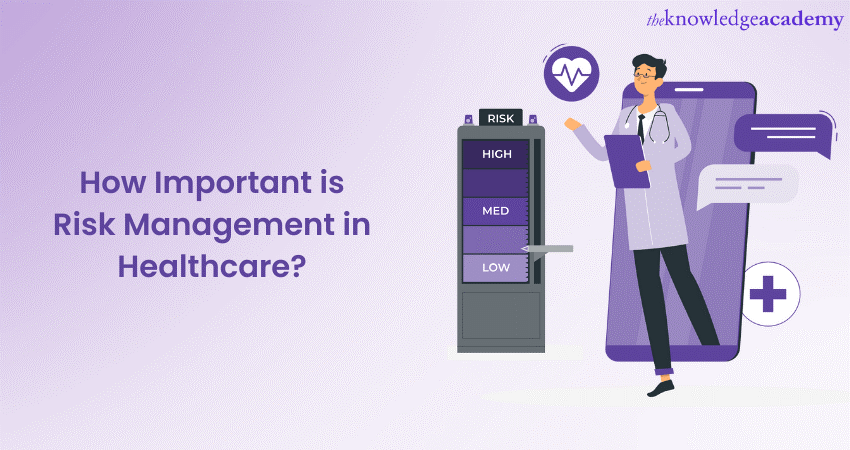A Comprehensive Guide to Understanding the Importance of Risk Management
A Comprehensive Guide to Understanding the Importance of Risk Management
Blog Article
The Essential Importance of Risk Management in Getting Organizational Objectives
In the swiftly developing business landscape, the capability to browse uncertainty has come to be a critical. This is where Risk Management action in, providing an organized approach to determining, analyzing, and mitigating prospective roadblocks to advance. It's greater than simply a safety step - it's a tactical device, promoting strength and development. As we explore the crucial duty of Risk Management in accomplishing organizational objectives, one can't assist but ask yourself: exactly how does this translate right into real-world success?
Understanding the Concept of Risk Management in Organization

The Important Function of Risk Management in Strategic Preparation
Incorporating Risk Management into tactical preparation acts as a safeguard for companies, securing their long-lasting strategies with a strong structure of preparedness and durability. Risk Management offers a structure for expecting unpredictabilities and designing suitable actions, ensuring the organization's survival and success also in the face of misfortune. By including Risk Management into tactical planning, organizations can transform these uncertainties into opportunities for development and development.

Strategies for Identifying, Assessing, and Prioritizing Dangers
Navigating the facility landscape of threats requires the application of certain methods for their prioritization, identification, and assessment. The procedure starts with Risk recognition, utilizing devices such as SWOT analysis, which aids in pinpointing possible threats and chances. Next, Risk assessment is carried out to ascertain the prospective effect and probability of each Risk. Tools such as Risk matrices and impact-probability charts are made use of for this. Ultimately, threats are prioritized based on their possible impact and probability, allowing organizations to concentrate their resources on high-priority threats. This organized method ensures a detailed understanding of the Risk landscape, enabling companies to make informed choices and effectively manage risks to accomplish their goals - importance of risk management.
Securing Business Workflow With Efficient Risk Management
In the company landscape filled with uncertainties, effective Risk Management plays an essential function in protecting organizational operations. It offers as a protective shield, mitigating the damaging results of prospective dangers and making sure the smooth functioning of all procedures. By determining and evaluating potential hazards, Risk Management makes it possible for companies straight from the source to establish durable backup plans. This preventative technique aids in maintaining functional stability, also when faced with unforeseen scenarios. In significance, Risk Management is the lifeline that pop over to these guys maintains the organizational operations afloat among unstable waters. It guarantees not just the survival yet the sustainable growth of a company, making it a crucial device in achieving business objectives. Therefore, companies need to buy extensive Risk Management techniques to safeguard their procedures.
Transforming Prospective Threats to Opportunities: The Power of Risk Management
While potential dangers could initially appear as barricades to organizational success, efficient Risk Management can change them into opportunities. A positive approach to take the chance of Management involves determining, analyzing, and prioritizing dangers to create approaches that turn them into possible benefits. This process demands the development of a risk-aware culture within the company, urging individuals to check out risks as prospective catalysts for adjustment and growth, as opposed to mere hazards. importance of risk management. Via this lens, possible dangers become chances to introduce, boost procedures, and enhance resilience. Thus, by leveraging the power of Risk Management, organizations can not only safeguard their operations however likewise spur growth and accomplish their goals in an unforeseeable service setting.
Situation Studies: Success Stories of Risk Management Driving Business Objectives
Effective look here implementation of Risk Management approaches has produced outstanding cause numerous companies, emphasizing the advantages of this technique. Multinational companies like Microsoft and Google, for example, have leveraged Risk Management to decrease risks and exploit opportunities, driving their organization purposes forward. Microsoft's proactive Risk Management technique helped it pivot quickly during the 2020 pandemic, transitioning to remote work smoothly, thereby maintaining productivity. Google, by analyzing and mitigating possible dangers in its cloud-based solutions, has actually made certain continuous solution, thus strengthening client depend on. These examples illustrate exactly how successful Risk Management can not only guide businesses clear of possible mistakes but also assist them in the direction of their tactical objectives. Thus, Risk Management is integral to the quest of organizational goals.
Verdict
In conclusion, Risk Management is essentially essential in attaining organizational goals. It supplies an organized approach to recognizing, evaluating, and addressing prospective dangers and opportunities. Greater than just mitigating dangers, it also fosters technology, resilience, and sustainable growth. By incorporating Risk Management right into strategic planning, services can better navigate unpredictabilities, safeguard procedures, and capitalise on chances, consequently lining up with long-term objectives.
At its core, Risk Management is the procedure of recognizing, analyzing, and resolving potential risks that might negatively influence an organization's goals or procedures. Next, Risk analysis is carried out to determine the possible influence and likelihood of each Risk. Dangers are prioritized based on their possible effect and possibility, permitting companies to focus their sources on high-priority threats. By determining and evaluating potential hazards, Risk Management allows organizations to develop robust backup strategies. A positive approach to risk Management includes recognizing, analyzing, and focusing on dangers to develop strategies that transform them into potential benefits.
Report this page